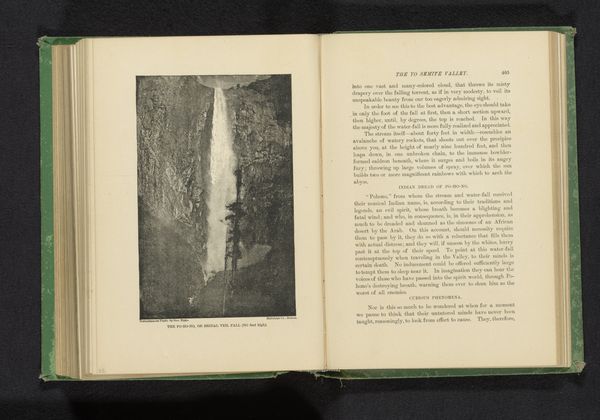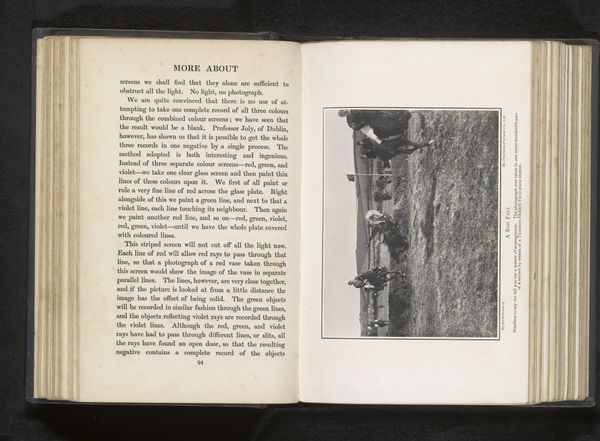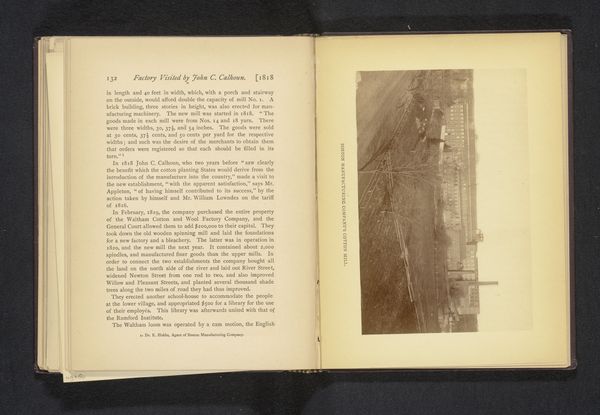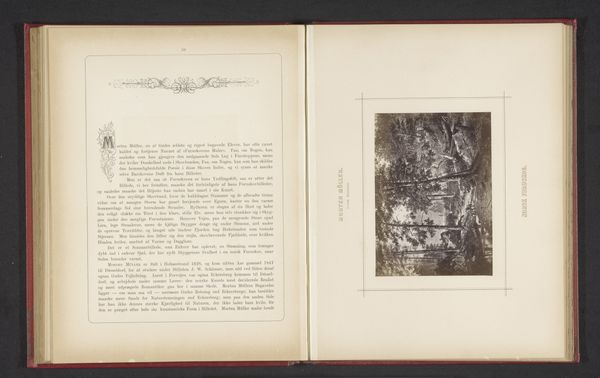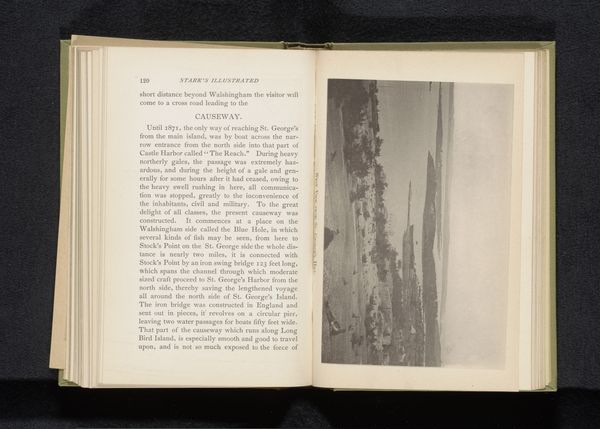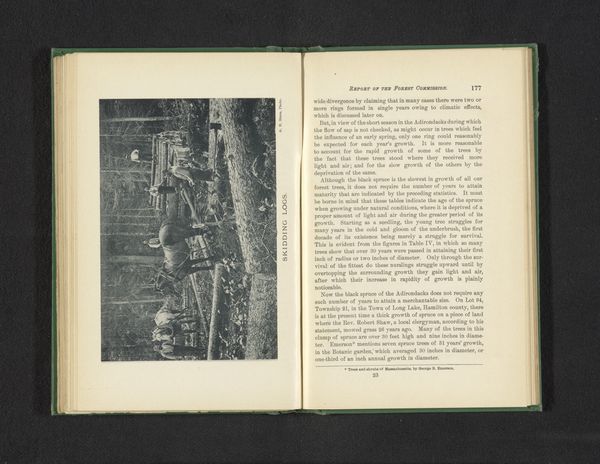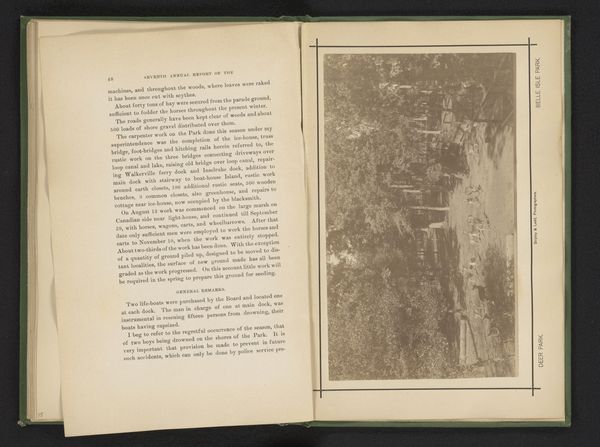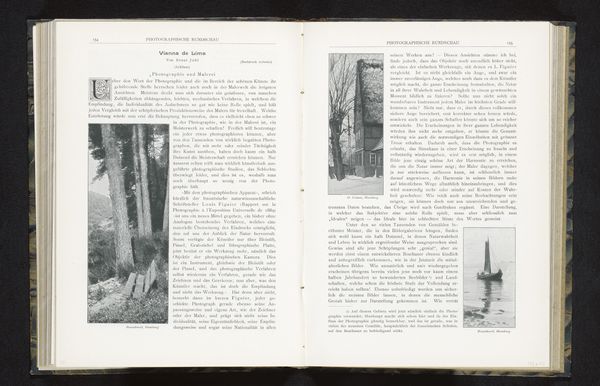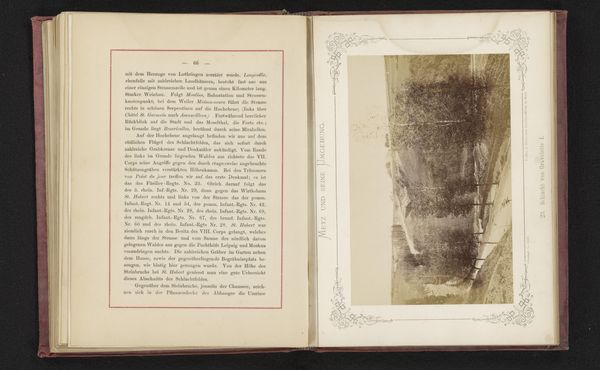
Gezicht op Waltham, Massachusetts, gezien vanaf de voet van Prospect Hill before 1879
0:00
0:00
print, photography
# print
#
landscape
#
photography
#
orientalism
#
modernism
Dimensions: height 100 mm, width 156 mm
Copyright: Rijks Museum: Open Domain
Curator: This print, taken before 1879 by Thomas R. Lewis, is entitled “Gezicht op Waltham, Massachusetts, gezien vanaf de voet van Prospect Hill." It appears to be mounted within the pages of a bound book. Editor: My initial response focuses on its muted palette and the almost oppressive verticality, it's really dominating the frame. There's a strong material presence to those darker areas—perhaps soot or other build-up clinging to the surface? It's difficult to tell what part of Waltham we're looking at because of the discolored printing. Curator: The composition leads our eye vertically, driven upwards by the tonal contrasts to meet the skyline. It could almost be described as an architectural form. The visual impact stems from this emphasis on height, directing our gaze—and perhaps, our thoughts—heavenward. This deliberate construction amplifies its formal elements in an almost philosophical fashion. Editor: Right, but the dirt, discoloration, and the stark way it's presented in the context of a book draws my attention to the historical context and process. What specific conditions of exposure altered the photograph this way? And this method of its display as one page in a historical volume speaks volumes about the circulation and perception of art and media in Lewis' time. How were photographic materials understood in that day? What makes it valuable to bookmakers? Curator: Perhaps Lewis aims to transcend mere representation; it seems like he aims at embodying a conceptual purity of “cityness,” where structural lines evoke grander social and historical meanings by transforming landscape photography into an ideological statement, by way of modern architecture. Editor: And, too, photography offered a new, accessible technology. It changed the material production of imagery while allowing wider audiences to participate and disseminate visual data. That such an industrial artifact becomes elevated is what captures me: where those spheres intersect we learn more about value making and systems of distribution then and today. Curator: You know, viewing it through a purely formal lens helped reveal those structures, those patterns, almost unnoticed on initial encounter, which might subtly direct how one's experience shapes meaning. Editor: Agreed; your breakdown gave me a chance to see where systems and materiality enhance or even critique visual form in unexpected ways.
Comments
No comments
Be the first to comment and join the conversation on the ultimate creative platform.
